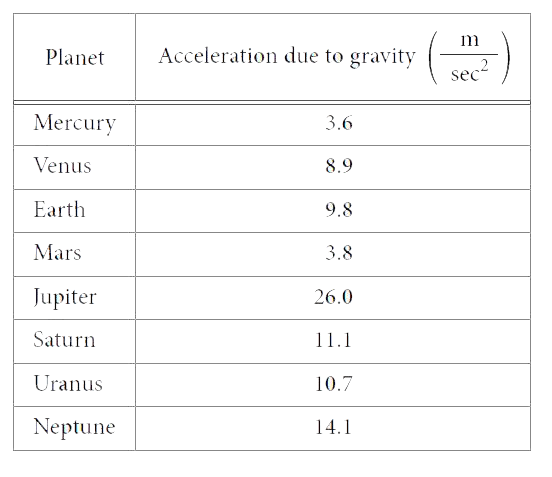The distance a free falling object has traveled can be modeled by the equation, d=12at2 where a is acceleration due to gravity and t is the amount of time the object has fallen. What is t in terms of a and d?
t=√da2
t=√2da
t=(da2)2
t=(3da)2
The correct Answer is:B
To find t in terms of a and d from the equation d=12at2, we can follow these steps:
1. Start with the given equation:
d=12at2
2. Multiply both sides by 2 to eliminate the fraction:
2d=at2
3. Rearrange the equation to isolate t2:
t2=2da
4. Take the square root of both sides to solve for t:
t=√2da
Final Result:
Thus, t in terms of a and d is:
t=√2da
d=12at2
2d=at2
t2=2da
t=√2da
Thus, t in terms of a and d is:
t=√2da
Topper's Solved these Questions
Similar Questions
The displacement of a body is given by s=12gt2 where g is acceleration due to gravity. The velocity of the body at any time t is
View Solution
The approximate height h of an object launched vertically upward after an elapsed time t is represented by the equation h=12at2+vot+ho, where a is acceleration due to gravity, vo is the object's initial velocity, and ho is the objects initial height. the table aabove gives the acceleration due to gravity on Earth's moon and several planets. If two identical objects launched vertically upward at an initial velocity of 40m/s from the surfaces of Mars and Earth's moon approximately how many more seconds will it take for the moon projectile to return to the ground than the Mars projectile?
View Solution
Knowledge Check
An object lauched upwards at an angle has parabolic motion. The height h, of a projectile at time t is given by the equation h=12at2+vyt+h0, where a is the acceleration due to gravity, vv is the vertical component of the velocity, and h0 is the initial height. Which of the following equations correctly represents the object's acceleration due to gravity in terms of the other variables ?
Aa=h−vvt−h0tBa=h−vvt−h02t2Ca=2(h−vvt−h0)t2Da=t√2(h−vvt−h0)
The chart above shows approximate of the acceleration due to gravity in meters per second squared (msec2) for the eight planets in our solar system. The weight of an object on a given planet can be found by using the formula W=mg, where W is the weight of the object measured in newtons, m is the of the object measured in kilograms, and g is the acceleration due to gravity on the planet measured in msec2.
What is the weight, in newtons, of an object on Mercury with a mass of 90 kilograms?A25B86C101D324
The dimensions of ab in the equation P=a−t2bx where P is pressure, x is distance and t is time are
View SolutionThe position of an object moving on a straight line is defined by the relation x=t3−2t2−4t, where x is expressed in meter and t in second. Determine
(a) the average velocity during the interval of 1 second to 4 second.
(b) the velocity at t = 1 s and t = 4 s,
(c) the average acceleration during the interval of 1 second to 4 second.
(d) the acceleration at t = 4 s and t = 1 s.
View SolutionA point mass m, is placed at the surface of a hypothetical planet where acceleration due to gravity is g2, where g acceleration due to gravity at the poles the planet. The latitude of that position is [T is time period of planet rotation about its own axis and R is radius of planet]
View SolutionThe displacement s of an object is given as a function of time t by the following equation s=2t+5t2+3t3. Calculate the instantaneous velocity of the object at t = 1 s.
View SolutionThe displacement of an object of mass 3 kg is given by the relation S=13t2, where t is time in seconds. If the work done by the net force on the object in 2 s is pq joule, where p and q are smallest integer values, then what is the value of p+q?
View SolutionA student measures that distance travelled in free fall of a body, initially at rest in given time. He uses this data to estimated g, the acceleration due to gravity. If the maximum percentage error in measurement of the distance and the time are e1 and e2, respectively, the percentage error in the estimation of g is
View Solution
